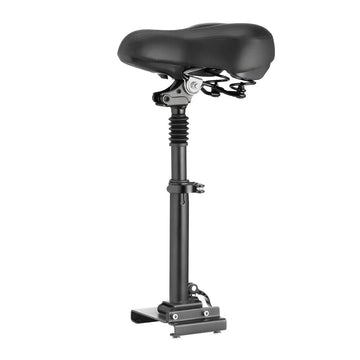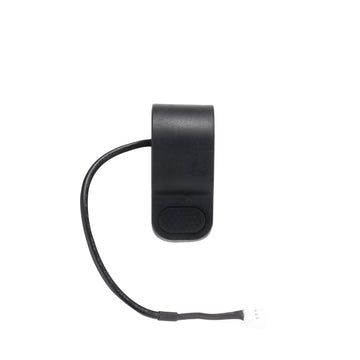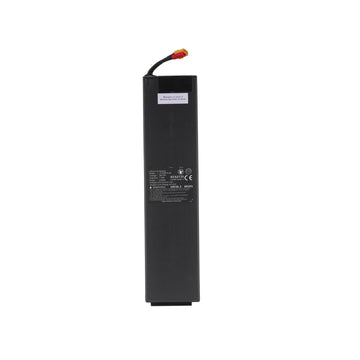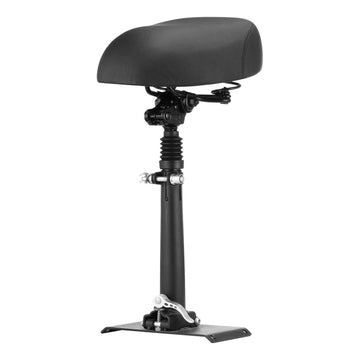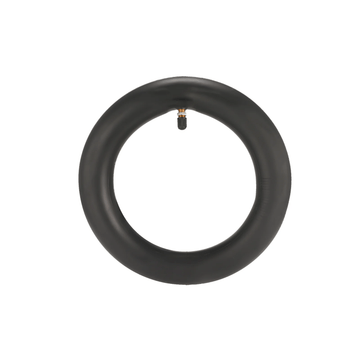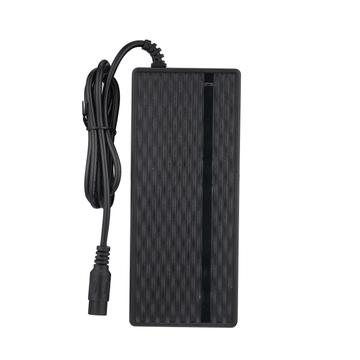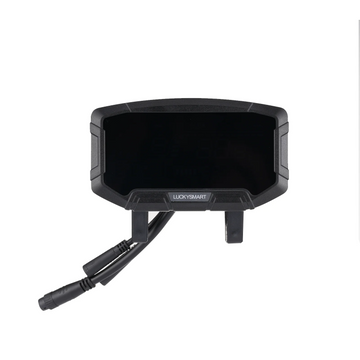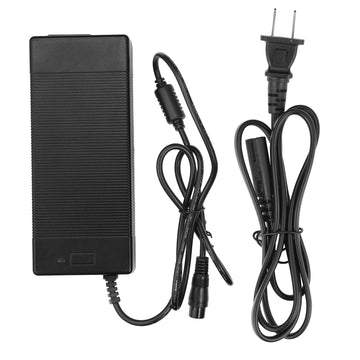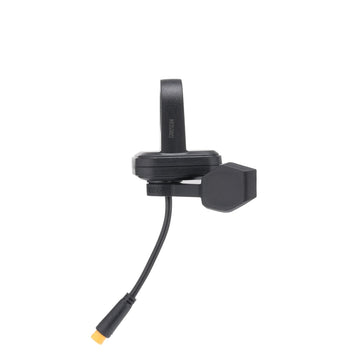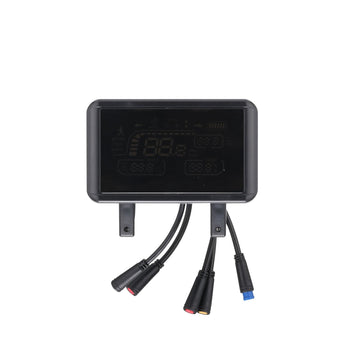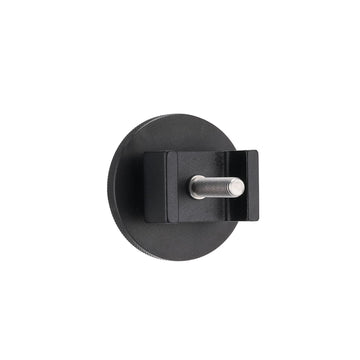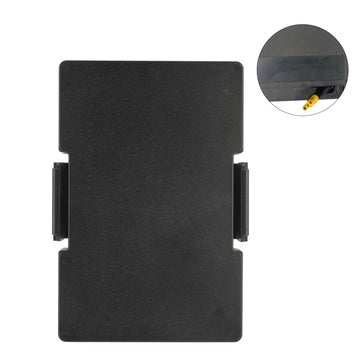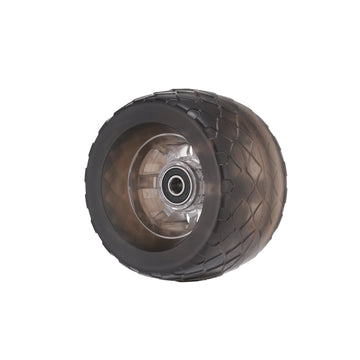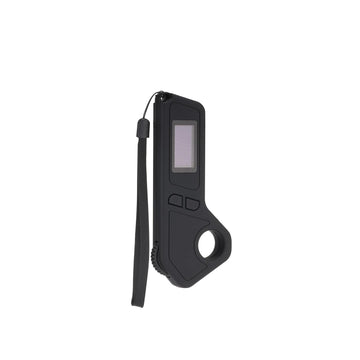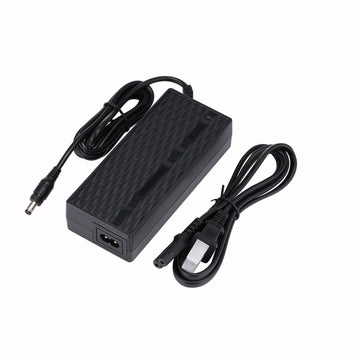
Ready to supercharge your e-bike? You don't need to buy a brand new ride to enjoy better performance and more fun on the road.
This guide walks you through all the upgrades that can transform your current e-bike, from simple weekend fixes to major power boosts.
Whether you want more speed, longer rides between charges, or a smoother journey, we've got practical tips that fit your budget.
E-Bike Upgrades: Why and When to Upgrade
Understanding when and why to upgrade your e-bike helps you make cost-effective decisions that enhance your riding experience.
Common Signs Your E-Bike Needs an Upgrade
- Your battery drains faster than it used to.
- Hills that were once manageable now feel challenging.
- You want more speed than your current setup provides.
- Your riding patterns have changed (like switching from city commuting to trail riding).
- The bike feels sluggish or underpowered for your needs.
- You experience range anxiety on regular rides.
Benefits of Upgrading vs. Buying a New E-Bike
- Cost savings: A battery upgrade costs $300-800, while new mid-range e-bikes start at $1,500
- Customization: Upgrade only what you need rather than accepting pre-built compromises
- Modular design: Most e-bikes allow for individual component swaps (motors, batteries, controllers, displays)
- Gradual improvements: You can upgrade components one at a time as your budget permits
- Familiarity: You keep the frame and geometry you're already comfortable with
- Sustainability: Extending the life of your current e-bike reduces waste
Setting a Budget for Your E-Bike Upgrades
Before upgrading, establish a clear budget with these general categories:
- High impact (but pricier): Battery, motor, controller upgrades ($300-1,000+)
- Medium impact: Tires, brakes, suspension ($100-400)
- Low cost but noticeable: Grips, saddle, lights ($20-150)
Always prioritize safety upgrades like brakes and lights if your current components aren't performing adequately, especially after increasing power or speed.
Not sure what E-bike is right for your upgrades? Check out our comprehensive guide to understand what an e-bike is and how it works.
Essential Battery Upgrades for Extended Range
The battery is the heart of your e-bike system, and upgrading it offers one of the most noticeable improvements to your riding experience.
How to Choose a Higher Capacity Battery
When selecting a new battery, look for:
- Higher amp-hour (Ah) rating for increased range
- Matching voltage with your current system (36V, 48V, 52V)
- Compatible connectors and mounting system
- Quality cells from reputable manufacturers (Samsung, LG, Panasonic)
Upgrading from 10Ah to 15Ah can provide up to 50% more range in ideal conditions, though actual results vary based on terrain, weight, temperature, and riding style. Always ensure controller compatibility to prevent system damage.
Dual Battery Systems
For maximum range extension, consider adding a second battery. This effectively doubles your riding distance, perfect for touring or limited charging access. Installation requires a parallel connector and mounting the battery on your frame or rack.
Battery Management Systems
A quality BMS ($50-150) protects your battery investment by providing:
- Better cell balancing
- Improved charging efficiency
- Temperature management
- Bluetooth connectivity for battery monitoring
Ready to hit the trails with your upgraded E-bike? Explore our collection of off-road electric bikes built for adventures.
Motor Upgrades to Boost Power and Performance
The motor is your e-bike's muscle, and upgrading it can deliver more torque, higher top speeds, and better hill-climbing ability. A well-chosen motor upgrade transforms how your bike handles challenging terrain and extends your riding possibilities.
Mid-Drive vs. Hub Motor Upgrades
When upgrading your motor, choose between:
Hub Motors:
- Easier installation
- Excellent for flat terrain
- Less drivetrain wear
- Typically cheaper ($200-600)
Mid-Drive Motors:
- Superior hill climbing
- More efficient on varied terrain
- Utilizes bike's gears
- Usually more expensive ($400-1,000+)
Your riding environment should guide your decision. City commuters often prefer hub motors, while off-road enthusiasts and those in hilly areas benefit more from mid-drives.
Upgrading to More Powerful Motors
Popular motor upgrades include:
- 750W motors: Good balance of power and legality in many U.S. regions
- 1000W+ motors: Significant power boost but often exceeds legal limits
Know your legal limitations:
- U.S.: Generally limited to 750W maximum
- EU: Restricted to 250W
- Australia: Limited to 250W for standard e-bikes
Exceeding these limits may restrict where you can legally ride and affect insurance coverage. Always ensure your controller matches your new motor's requirements and verify your frame can handle the additional torque.
Controller Upgrades
Upgrading your controller can unlock hidden potential in your motor by providing:
- Higher current output for increased power
- Improved throttle response
- Additional features like cruise control or multiple assist levels
- Programmable settings for customization
Critical note: Controller and motor must be properly matched for voltage, current, and communication protocols to prevent system failures or component damage.
Find the perfect size for your upgraded E-bike! Check out our e-bike sizing guide to ensure your upgraded ride fits perfectly.
DIY E-Bike Conversion Kits
Conversion kits offer an exciting way to transform a conventional bicycle into an electric powerhouse tailored to your specifications. These kits provide maximum customization flexibility and are often more economical than purchasing a pre-built electric bike.
E-Bike Conversion Kit Buying Guide
Quality conversion kits ($400-1,200) include:
- Motor (front hub, rear hub, or mid-drive)
- Battery and mounting hardware
- Controller and display
- Throttle and/or pedal assist sensor
- Wiring harness
Look for kits with clear instructions, good customer support, and readily available spare parts. Ensure all components are designed to work together to avoid compatibility issues common in budget kits.
Want to know about Class 2 E-bikes with throttle control? Learn everything about Class 2 e-bikes and their features.
Upgrading E-Bike Components
Beyond the core electric system, upgrading mechanical components can dramatically improve handling, comfort, and safety. These upgrades are often more affordable and can make a significant difference in your daily riding experience.
Brake Upgrades
E-bikes' increased weight and speed demand quality brakes. Consider:
- Hydraulic disc brakes for better modulation and stopping power
- Larger rotors (180mm or 203mm) for improved heat dissipation
- E-bike-specific performance brake pads
- Upgraded brake levers with better ergonomics
A complete brake upgrade provides crucial safety benefits, especially after increasing speed or power. Never compromise on braking capability.
Suspension Upgrades
Better suspension transforms the riding experience:
- Front suspension fork with adequate travel (80-120mm for most e-bikes)
- Suspension seatpost for rear comfort
- Air suspension for better adjustability
- Thicker fork stanchions to handle e-bike weight
Tire Upgrades
Tires significantly affect range, comfort, and capability:
- Puncture-resistant models reduce flats
- Wider tires (2.3-2.8") enhance stability
- E-bike specific tires with reinforced sidewalls last longer
- Different tread patterns for various terrain types
Quality tires ($80-150) can improve range by 10-15% through reduced rolling resistance while enhancing comfort and traction.
With your e-bike's mechanical performance optimized, adding the latest technology can further enhance your riding experience and functionality.
Ready to shop for a brand new E-bike instead? Browse our full collection of electric bikes with the latest features.
E-bike Tech and Accessory Upgrades
Modern technology can transform your e-bike into a smart vehicle with enhanced functionality, safety features, and connectivity. These tech upgrades add convenience and capabilities that can make your daily rides more enjoyable and productive.
Advanced Display and Control Systems
New displays can add valuable features:
- Color screens with better visibility
- GPS navigation
- Heart rate monitor compatibility
- Customizable assist levels
- Detailed battery statistics
Ensure any display upgrade is compatible with your motor and controller system. Many displays use proprietary communication protocols specific to certain brands or systems.
Lighting System Upgrades
Integrated lighting improves safety and convenience:
- High-output LED headlights (500+ lumens)
- Taillights with brake light functionality
- Turn signals for urban riding
- Frame-mounted lights powered by your main battery
Smartphone Integration
Modern e-bikes can connect to smartphones for enhanced functionality:
- Ride tracking and fitness data
- Anti-theft GPS tracking
- Remote diagnostics
- Custom motor tuning
- Social features
Now that you understand the range of possible upgrades, let's look at some practical projects you can tackle immediately to enhance your riding experience.
Conclusion
Upgrading your e-bike is like giving your favorite toy superpowers! Start small with affordable improvements like better grips or tires, then work up to bigger changes when you're ready.
For quality components that won't break the bank, check out Isinwheel's line of e-bike accessories and upgrade kits.
Our products offer great value for riders looking to boost performance. With the right Isinwheel upgrades, your trusty e-bike can keep up with your growing skills for years to come.
Frequently Asked Questions
How can I make my e-bike go faster?
Speed upgrades include installing a more powerful motor, upgrading the controller, or adding a higher voltage battery. Always check local laws first, as the US limits e-bikes to 20-28 mph depending on class, while the EU caps speeds at 15.5 mph. Exceeding these limits may reclassify your bike as a moped requiring registration and insurance. Remember to upgrade your brakes to match any increase in speed.
Are e-bike conversion kits worth it?
Conversion kits ($400-1,200) offer excellent value if you already own a quality bicycle you enjoy riding. They cost significantly less than new e-bikes while often delivering similar or better performance. You'll gain valuable knowledge about e-bike systems that helps with future maintenance. Just be prepared for some problem-solving during installation as you fit components to your specific bike.
What upgrades provide the best value for an e-bike?
The best value upgrades include controller improvements ($80-250), puncture-resistant tires ($80-150), and hydraulic disc brakes ($150-300). These targeted enhancements significantly improve performance and safety without the expense of replacing major components. These mid-range upgrades typically offer the best balance between cost and noticeable improvement in your daily riding experience.
How much does it cost to upgrade an e-bike battery?
Battery upgrades typically cost $300-900 depending on capacity, quality, and compatibility with your system. For example, upgrading from a 36V 10Ah to a 36V 17.5Ah battery might cost $450-600 and could increase range by up to 75% in ideal conditions. Actual range gains vary based on terrain, temperature, and riding style, with winter riding or hilly routes reducing the real-world benefits you'll experience.
Can I upgrade my e-bike motor without changing other components?
Motor upgrades almost always require matching controller upgrades to handle increased power requirements. These components function as a paired system, with improper matching causing performance issues or component damage. Significant power increases (like going from 500W to 1000W) may also necessitate battery upgrades to provide sufficient current and brake improvements to maintain safety. Think of your e-bike's electrical system as an integrated ecosystem where all parts must work harmoniously.
























